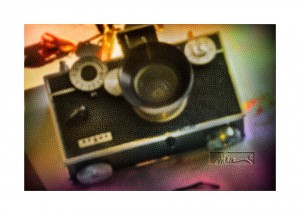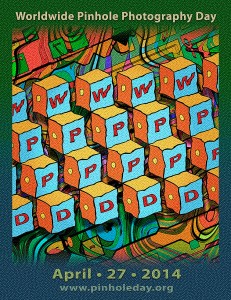In terms of digital pinhole, sharpness is a relative term. Pinhole sharpness is relative to the size of the digital sensor or film area used to record the light.
Pinhole by its nature will never be as sharp as a good lens image. However, there are factors, which can produce sharper or softer results. The attraction to pinhole has to do with a number of qualites. Softness and painterly effects are two of mine.
If you seek the sharpest results in your pinhole work, digital is probably not the way to work. You would be best to work with a large format film camera such as a 4×5 or 8×10.
Lately, I have been using the fairly small sensor of my M4/3rds Olympus to record my subjects. This smaller sensor is roughly half the dimension of a full frame camera. Because the sensor area is smaller, it produces a much softer image result.
An APS sized sensor creates an image that is considerably sharper. That is due to the larger sensor size of the APS Camera. Full frame sensors are even better. The goal of pinhole is not so much about sharpness. Rather, it is more about the quality and range of softness.
In theory, the bigger the sensor size the better the pinhole resolution will be. However, there are a few other factors that come into play with a pinhole image. There happens to be an ideal pinhole size based on focal length and the image area of the sensor. Also, if you are interested in producing the sharpest pinhole image possible, it is important to take great care in making the pinhole opening.
I personally like the variety of results provided by different cameras, focal lengths, sensor sizes and pinhole differences. With pinhole there are times when less detail is nice and other times when I like more. Pinhole images are never as sharp as a lens image, but that is part of the charm. I think I was the first person to produce digital pinholes for WPPD. The camera I used at the time was less than a megabyte and the resolution was just enough to suggest the kinds of subjects shot.
If you ever try pinhole with a large format film camera, you will see a vastly improved sharpness because of the relationship of the pinhole size to the area of the film. Again, the kind of image you can produce will depend on those other factors as well.
Part of the attraction to pinhole is the simplicity and the gratification of doing it all yourself. However, it can also be quite fun to use a pre-made device.
While many pinhole photographers like to create the complete DIY pinhole experience by making the pinholes and mounts themselves, some people like to use the perfectly produced laser burned pinholes that are available from different resources. Generally, they will most likely produce the best possible apertures due to their perfect roundness and accurate openings. There are a number of great resources for laser apertures including a nice little company called Skink Pinhole.
Skink Pinhole makes it very easy to make digital pinhole images. They make some very beautiful pinhole mounts as well as precision pinholes that will fit almost any interchangeable lens camera. I will be doing a few articles soon about them.
The image above, was produced with a .2 mm Pinhole mounted to an APS DSLR. Shot indoors using overcast window lighting, the exposure was 30 seconds. During the exposure, I used a second light source to provide additional exposure.
Every year, I look forward to Worldwide Pinhole Photography day as a way to get past the winter months. It gives me a nice goal for spring and makes the winter seem a bit more fun. Over the next month or so, I’ll be making a bunch of pinhole images as I play around with different tools in preparation for Worldwide Pinhole Photography Day. I’ll be posting many of the images I am playing with, in hopes that they will be inspirational.
The next pinhole day is April 27, 2014 – WPPD Website
Here are a few previous pinhole posts:
Matchbox Pinhole – Easy to make and FUN to use!
Pinhole Photography – How to measure the diameter of a DIY pinhole aperture
Read more about pinhole photography and other great photographic techniques in my book Rethinking Digital Photography.
Please have a look at some of my other posts here.
NOTICE of Copyright: THIS POSTING AS WELL AS ALL PHOTOGRAPHS, GALLERY IMAGES, AND ILLUSTRATIONS ARE COPYRIGHT © JOHN NEEL AND ARE NOT TO BE USED FOR ANY PURPOSE WITHOUT WRITTEN CONSENT FROM THE WRITER, THE PHOTOGRAPHER AND/OR lensgarden.com. THE IDEAS EXPRESSED ARE THE PROPERTY OF THE PHOTOGRAPHER AND THE AUTHOR.



